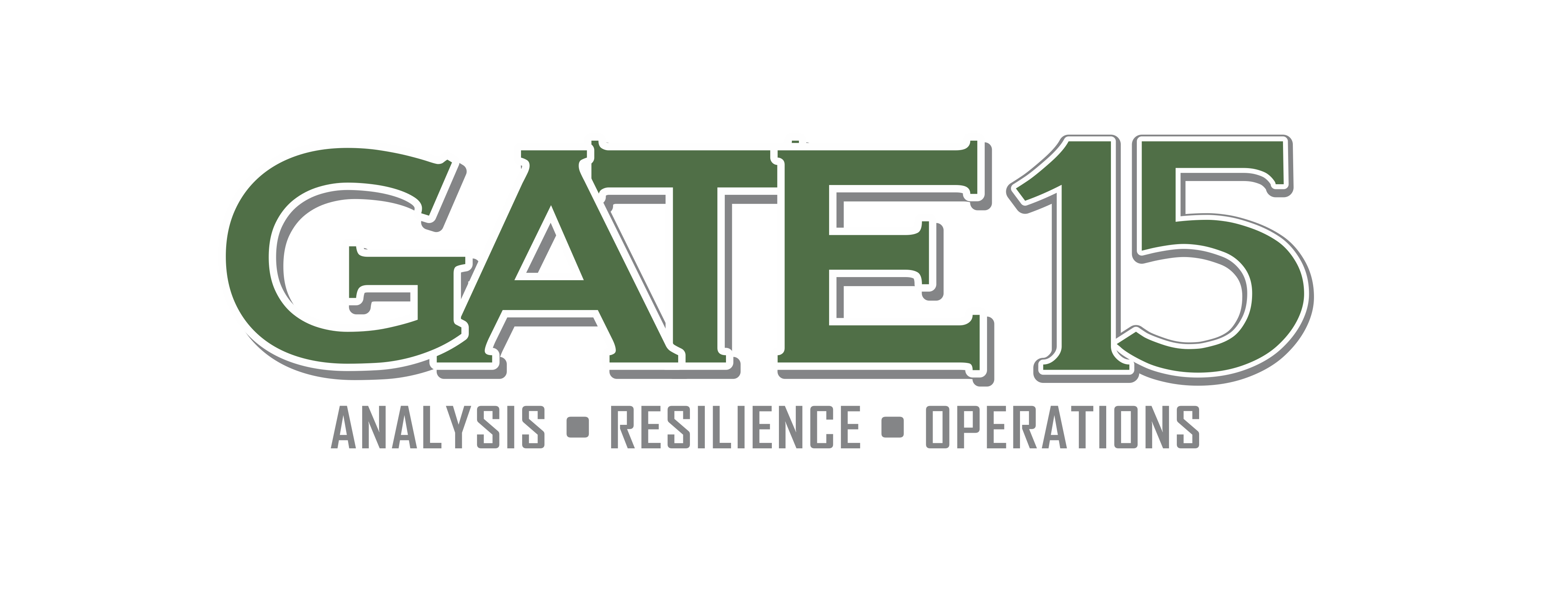By Bridget Johnson (@BridgetCJ)
The Department of Homeland Security rang in the holiday season by adding a new office to its operations stable earlier this month: the CWMD, or Countering Weapons of Mass Destruction (CWMD) Office, which Homeland Security Secretary Kirstjen Nielsen called “a more integrated approach, bringing together intelligence, operations, interagency engagement, and international  action” to confront “rising danger from terrorist groups and rogue nation states who could use chemical, biological, radiological, and nuclear agents to harm Americans.”
action” to confront “rising danger from terrorist groups and rogue nation states who could use chemical, biological, radiological, and nuclear agents to harm Americans.”
The director of the CWMD, Director of the DHS Domestic Nuclear Detection Office (DNDO) James McDonnell, told a House subcommittee that “in the last year, we’ve observed a credible increase in terrorist interest in using WMD against the United States,” across all types of agents. McDonnell said the new office aims to cut deeper into smuggling paths, and “deploy into the environment where we know bad guys are operating, be less predictable, and find the threat before it reaches our borders.”
“in the last year, we’ve observed a credible increase in terrorist interest in using WMD against the United States”
The prospective use of WMDs doesn’t surface much in open-source ISIS communications, but that doesn’t mean the power of such a weapon isn’t constantly on their minds or that they wouldn’t jump at the chance to acquire lethal agents. With the fall of their caliphate in Iraq and Syria and emphasis on attacks with global distribution using often unskilled operatives, ISIS has placed heavy emphasis on low-tech methods such as cars and knives. Every so often the terror group nudges lone jihadists to think about using poison for an attack, especially if they have  a job or neighborhood knowledge in which it would be easier for them to target sensitive populations in addition to food or water sources.
a job or neighborhood knowledge in which it would be easier for them to target sensitive populations in addition to food or water sources.
ISIS adherents got terror tips outside the usual mold of calls for shooting sprees or arson in a September 2016 guide distributed by the ISIS-linked Nashir Media Foundation advising garden-based bioweapons. The guide walked through extraction methods to get ricin from castor seeds and poison from the strychnine tree. It listed several poisonous plants that are commonly found, including Hyoscyamus niger, or stinking nightshade: “The entire plant is extremely toxic… used sometimes in the commission of crimes.” Even in bioweapons, ISIS steers their worldwide jihad crew toward agents that are low-tech and often lower-suspicion in the planning stages.
Al-Qaeda’s history of aspiring to WMD use is more entrenched. They have deeper global connections, including long-running, supportive ties with Iran. They have strong chapters doing their own WMD R&D. They can produce operatives with the skills to carry out a WMD attack. The terror group has paid attention to managing their finances – al-Qaeda in the Islamic Maghreb has pulled in $100 million from ransoms and drug trafficking alone – and FBI Director Christopher Wray recently confirmed to Congress that al-Qaeda “maintains its desire for large-scale spectacular attacks.”
ISIS has placed heavy emphasis on low-tech methods such as cars and knives… al-Qaeda “maintains its desire for large-scale spectacular attacks.”
They’ve got a bit of a public relations clash now, though, as opposed to the pre-caliphate days. Al-Qaeda has been executing a careful strategy to gain favor over ISIS in the Muslim world by outlining policies and even disciplinary action for jihadists for killing Muslims. Obviously, the consideration of Muslim casualties didn’t deter mass attacks on the U.S. embassies in Kenya and Tanzania, the 9/11 attacks, the Bali bombings, the London tube bombings, and on. More recent attacks, though, have included more tailored assaults with an emphasis on assassination, such as the Charlie Hebdo murders by al-Qaeda in the Arabian Peninsula and targeted machete assassinations against some people determined to be blasphemers by al-Qaeda in the Indian  Subcontinent (again, the target-approval guides are explicit in who qualifies for assassination, and have claimed not being Muslim isn’t enough of a crime to get the death penalty). So WMD usage could easily backfire on these years of strategy intended to gain wider support for the long run.
Subcontinent (again, the target-approval guides are explicit in who qualifies for assassination, and have claimed not being Muslim isn’t enough of a crime to get the death penalty). So WMD usage could easily backfire on these years of strategy intended to gain wider support for the long run.
Whether terror groups act on their fantasies of using WMD will also be influenced by availability. Who’s got WMD up for grabs? Maybe start with the dictator who sends assassins into a public airport with VX-potent hankies to kill his half-brother with the deadliest nerve agent ever created. According to South Korea’s defense ministry, North Korea may have up to 5,000 tons of chemical weapons and a large-capacity bioweapons operation – so whether it’s sarin or the bubonic plague, Kim Jong-un’s probably got it in stock or on short backorder. And then, of course, there’s their famed nuclear weapons and missile delivery program that would benefit from the highest bidder putting up some WMD cash.
Who’s got WMD up for grabs? Maybe start with the dictator who sends assassins into a public airport with VX-potent hankies to kill his half-brother with the deadliest nerve agent ever created…
Pyongyang’s not the only source in a restive world. In Syria, for example, we unfortunately know by now that Bashar al-Assad never got rid of all his chemical weapons – including the sarin dropped on Khan Sheikhoun under a deal to avoid attack in 2014. This week the U.S.-led coalition said that they would not be following ISIS into Assad-held territory – even though the terrorists “seem to be moving with impunity through regime-held territory, showing that the regime is clearly either unwilling or unable to defeat Daesh within their borders.” As Assad has claimed to fight ISIS the two have enjoyed lucrative oil and trade deals; hopefully that hasn’t or won’t extended to WMD, as well.
Maintain security and threat awareness via Gate 15’s free daily paper, the Gate 15 SUN and learn more about Hostile Events Preparedness and our HEPS Program here. Gate 15 provides intelligence and threat information to inform routine situational awareness, preparedness planning, and to penetrate the decision-making cycle to help inform time-sensitive decisions effecting operations, security, and resources. We provide clients with routine cyber and physical security products tailored to the individual client’s interests. Such products include relevant analysis, assessments, and mitigation strategies on a variety of topics.
routine situational awareness, preparedness planning, and to penetrate the decision-making cycle to help inform time-sensitive decisions effecting operations, security, and resources. We provide clients with routine cyber and physical security products tailored to the individual client’s interests. Such products include relevant analysis, assessments, and mitigation strategies on a variety of topics.
 Bridget Johnson is a Senior Risk Analyst with Gate 15 and a veteran journalist whose news articles and analyses have run in dozens of news outlets across the globe. Bridget first came to Washington to be online editor at The Hill, where she wrote The World from The Hill column on foreign policy. Previously she was an opinion writer and editorial board member at the Rocky Mountain News and nation/world news columnist at the Los Angeles Daily News.
Bridget Johnson is a Senior Risk Analyst with Gate 15 and a veteran journalist whose news articles and analyses have run in dozens of news outlets across the globe. Bridget first came to Washington to be online editor at The Hill, where she wrote The World from The Hill column on foreign policy. Previously she was an opinion writer and editorial board member at the Rocky Mountain News and nation/world news columnist at the Los Angeles Daily News.
Bridget is a Senior Fellow specializing in terrorism analysis at the Haym Salomon Center. She is an NPR contributor and has contributed to USA Today, The Wall Street Journal, National Review Online, Politico, New York Daily News, The Jerusalem Post, The Hill, New York Observer, Washington Times, RealClearWorld and more, and has myriad television and radio credits. Bridget is Washington Bureau Chief for PJ Media. Follow Bridget on Twitter: @Bridget_CJ
Christopher Wray photo, CBS News, 12 Jul 2017, https://www.cbsnews.com/news/christopher-wray-confirmation-hearing-for-new-fbi-director-live-updates/
Jolly Kim Jong-un, AFP/GETTY via The Telegraph, 17 Dec 2013, http://www.telegraph.co.uk/news/worldnews/asia/northkorea/10522136/Kim-Jong-un-10-ways-North-Koreas-Dear-Leader-is-different.html



